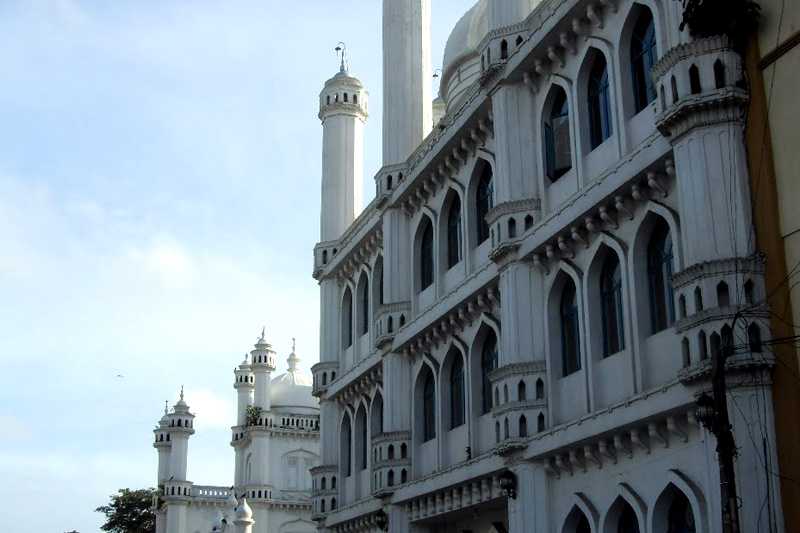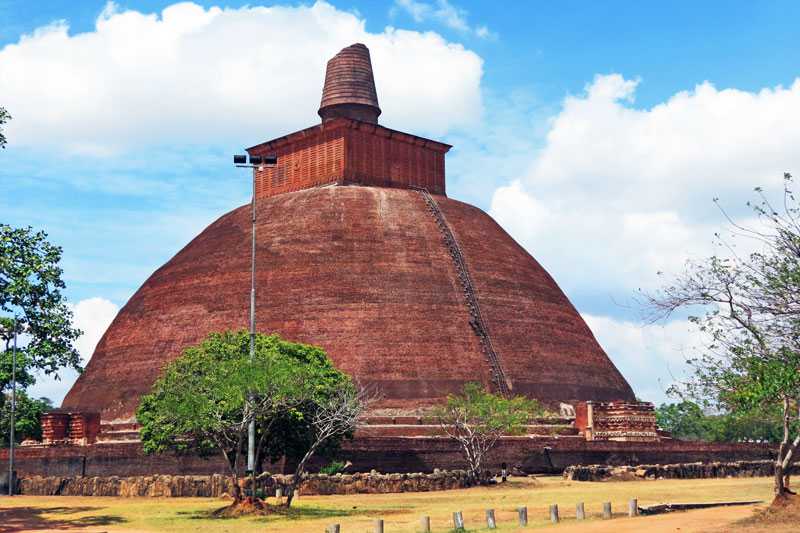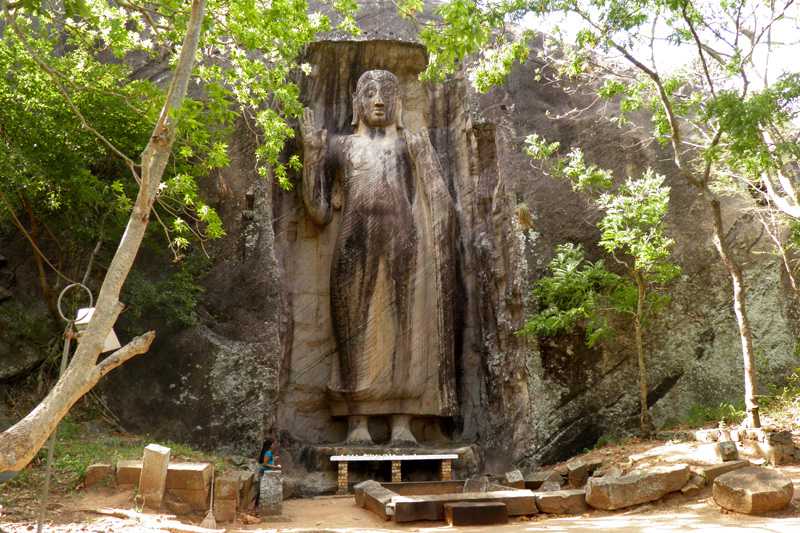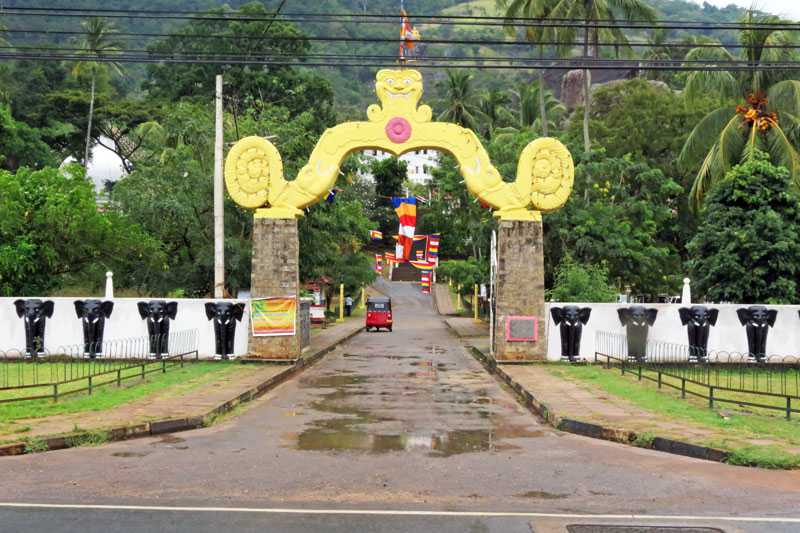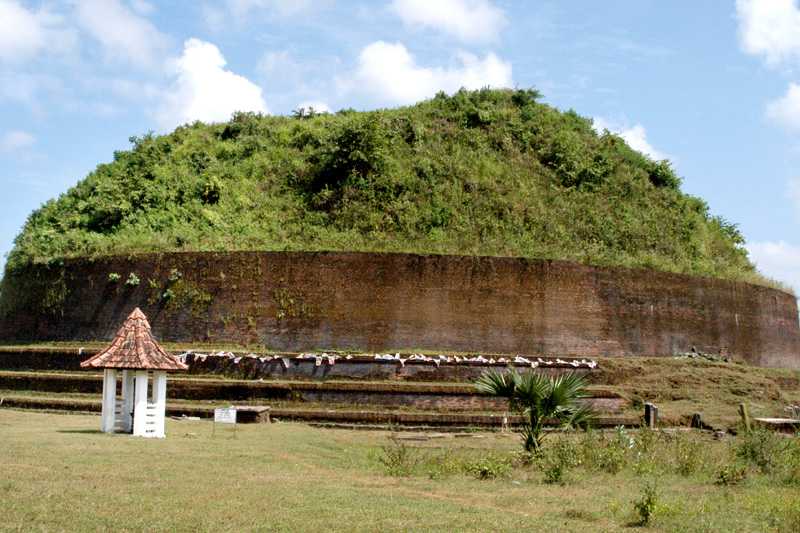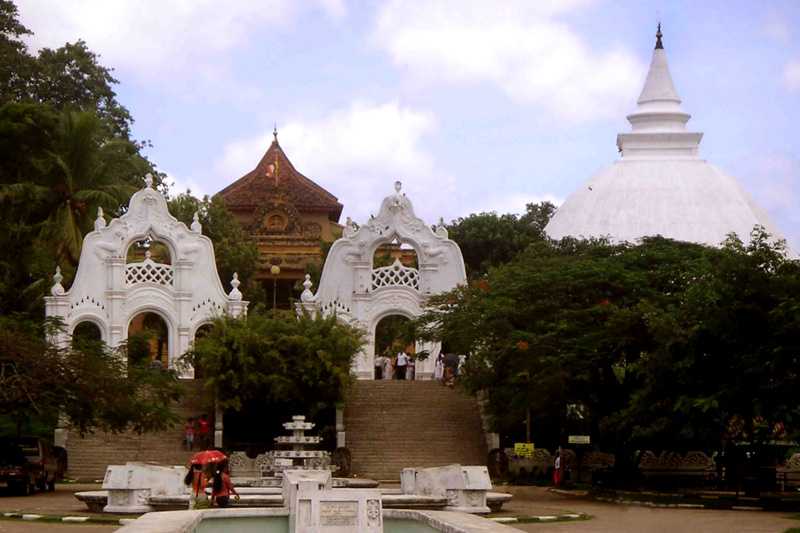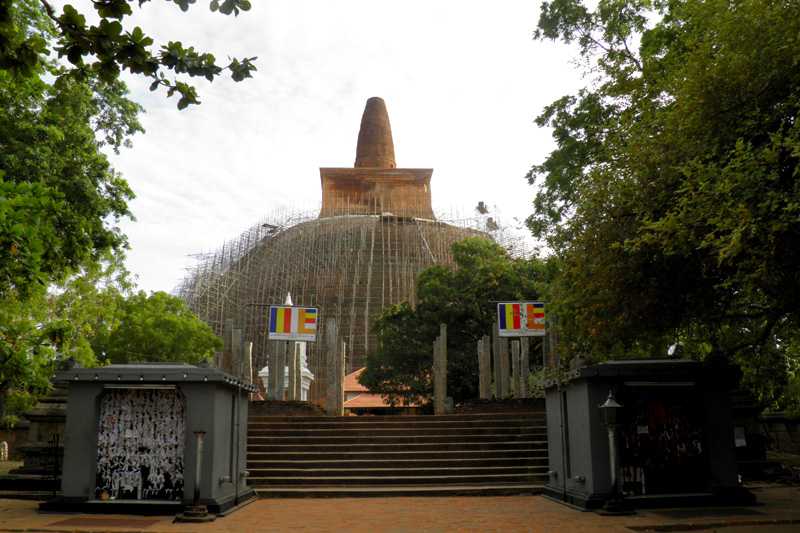Koneswaram Kovil
Aathi Konesvaram is a regionally important Hindu temple is located in a predominantly a Buddhist area; Thambalagamuwa village in the Trincomalee District of Sri Lanka. The name of the temple in Tamil means the "Temple of the Original Lord of Ko esvaram". It is situated 24 kilometres from the port town of Trincomalee. The temple was constructed during the 17th century in replacement to the Koneswaram temple (Temple of Thousand Pillars) that was destroyed by Portuguese in 1622. Only the main sanctum sanctorum remains of the original temple. The Gopuram or main entrance tower was added in 1953 and is one of the tallest in the region. The temple is built of stone and is surrounded by two enclosed path ways. The presiding deity is Siva but there are important cults associated with the veneration of Pattini Amman and Kathirkaswami accommodated within the main premises as well. The temple also has minor shrines to Pulleyar, Navagraha, Murunkan, Valli and Tevayani. The daily services are held set according to scriptures along with an elaborate annual festival that involves Tamil and Sinhala devotees of Trincomalee district. There are also festivals that pertain to Pattini Amman and Kathirkaswami. As part of the Sri Lankan civil war, in the 1980s and 90's the village was deserted and the temple abandoned. Since 2004 residents of the village have returned and the temple has been restored.
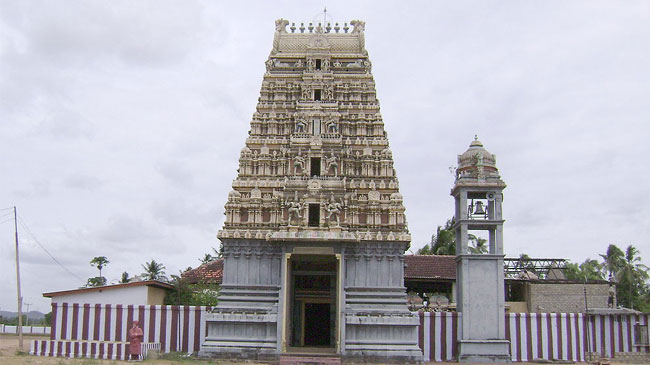
This temple is situated in the village of Thambalagamuwa that was part of the medieval semi-independent feudal division called Thambalagamuwa Pattu. Prior to the arrival of Portuguese in 1622 and then Dutch colonial overloads in 1656, leaders of the Thambalagamuwa Pattu and others around it were independent rulers sometimes subject to Jaffna kingdom or Kandyan kingdom. Thambalagamuwa is surrounded by lush paddy fi elds and was a prosperous settlement. The presiding deity is known as Ati Konanayakar and the consort as Hamsagamanambike, another name for Mother Goddess Amman. These names are signi fi cant of the original presiding deity of the Ko esvaram temple, Konesar and Annam Mennatai. The idol of the presiding deity is dated to the later Chola period (1070-1279 CE) and the consort to that of early Chola period based on the composition of metals and styles. The temple's name and the separate shrine to Ati Konanayakar allude to the tradition that this temple was built to accommodate the idols that were saved from the destruction of the Temple of Thousand Pillars in Trincomalee by the Portuguese colonial of fi cers.
According to Tirukonasala Purana the temple was built with the help of Kandyan King Rajasingha II (1630–1689) after the loss of Koneswaram temple in the Trincomalee town. The idols that were saved from the destroyed temple were moved from place to place and eventually located in a secure territory under the Kandyan jurisdiction. According to the chronicle Vara rasasinkam identifi ed with Rajasingha II by historians says that the Kandyan kings also provided for the upkeep of the temple by allocating land to the temple in perpetuity and revenue distribution from local taxes. Another Tamil text of interest is Konesar Kalvettu. It is written from a point of view legitimizing the claims of the new temple that is Ati Konnanayakar to the traditions, revenue and services rendered to the destroyed Koneswaram temple. Author of the text is Kavirasa Varotayan and was written after the new temple was established
According to the Tirukonasala Purana, Rajasingha II directed the local feudal lords to maintain the temple and its administration. These traditions were maintained by the local Vanni chiefs of the Thambalagamuwa Pattu division during the consequent period. The prevalence of this tradition as a successor temple to the original temple destroyed by the Portuguese was recorded by the Dutch colonial governor of Trincomalee, Van Senden in 1786. He recorded the physical status of the idols that were from the original Koneswaram temple. Residents of Thambalagamuwa Pattu made requests to the Dutch colonials to follow the traditions of allocating a portion of the revenue generated from paddy cultivation of rice to the maintenance of the temple. A similar request was also made to the British colonial governor Alexander Johnston by the Vanni lords of the Thambalagamuwa Pattu, in 1815.
As a substitute temple to the original Koneswaram temple that was destroyed, tradition has endowed Ati Konanayakar with all privileges that were enjoyed by the previous temple. This includes the association of Hindus from various parts of Trincomalee district its festival organization to the assimilation of all local non-Saiva cults within the temple premises. During the Kandyan and later Dutch colonial period the Tamapalakamam temple also enjoyed revenue from the land that was given to it via royal gifts. During the British colonial period the temple came under the control of private ownership. The temple's private trustees were removed and in 1945 it became the responsibility of locally elected board. The Gopuram or gate tower was added in 1953. and is one of the largest towers in the region and is of fi ve stories high







